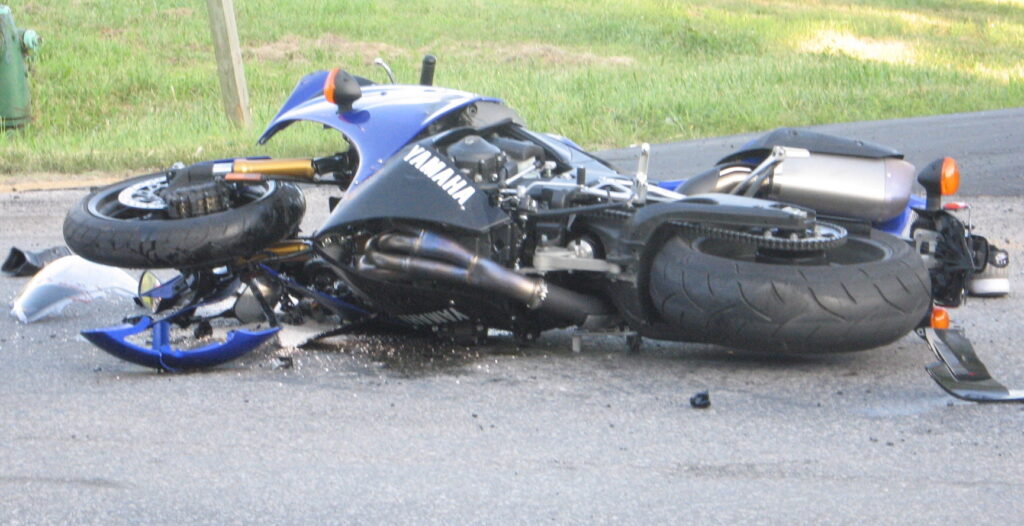The age at which a child can be a bike passenger depends on which jurisdiction you are in and the relevant state laws. In California, there is no specific age limit set by the state for a minor to sit on the back of a motorcycle. But they must be able to physically reach and rest their feet flat on the motorcycle’s footrests while sitting on the seat.
Young ones under the age of 18 have bodies that are still developing so they are much more vulnerable to life-threatening injuries in case of an accident. If a child is unable to reach the footrests, they are more likely to lose their balance and fall, especially when the bike is moving at high speeds or makes sudden stops or turns.
In this post, we will discuss what California law says about children and bike safety laws, and the best ways to implement them so your little one is never at risk.
California Motorcycle Safety Laws for Children and Minors
During their growth years, a child’s musculoskeletal system is not as developed as an adult’s, so they have less body mass and muscle to absorb the impact of a collision. Children also tend to have larger heads in proportion to their bodies, making them more top-heavy. This further increases the risk of head and neck injuries if they fall.

Not to mention their skin is thinner and more sensitive to road rash, cuts, and other surface injuries. Considering these factors, certain safety regulations have been created on both state and federal levels for minors. There is still no minimum age requirement to be a passenger on a motorcycle, but you do need to follow these rules:
- The child must be able to reach the motorcycle’s footrests while seated.
- They must wear a full-faced, U.S. DOT-compliant helmet that fits well.
- The motorcycle must have a proper passenger seat.
- They should wear protective gloves and long pants, a heavy jacket, and closed-toe shoes.
- Their shoes should be durable and fastened tightly to prevent them from coming off in an accident.
- Some kind of belt or harness system should be used to attach the child to the adult rider. So, if the bike goes down, the child stays attached to the rider rather than being thrown off.
For bicycles, the state requires that all minors under the age of 18 wear a helmet when riding on a street, bikeway, or public bike path or trail. This also applies to children who are bicycle passengers.
In addition to the rules above, we also recommend taking less busy roads where you can maintain a moderate speed, especially when you are riding with a child. Why invite the danger that comes with heavy traffic and high-speed roads if you can avoid it?
And educate your kids on basic hand signals and what they mean. Create a simple touch-based signal system between you for communication, as it might be hard to hear each other over the engine noise.
Before you hit the road, always perform a quick but thorough check of your motorcycle. Make sure the brakes, lights, and signals are all in working condition.
How Old Do You Have to Be to Get a Motorcycle Operator’s License in California?
The specific age requirements for obtaining a license depend on your age group:
Minors (15½ to 17½ years old)
You must submit a DL 389 form and bring proof that you have completed driver education and driver training. Or, you can show that you already have a Class C driver license. You will also need to pass both the general driver knowledge test and the motorcycle-specific knowledge test.
Young adults (18 to 21 years old)
If you are in this age bracket, you also need to submit a DL 389 form. You will have to pass both the general driver knowledge test and the motorcycle-specific knowledge test.
Adults (21 years old and older)
While not mandatory, you are encouraged to enroll in the California Motorcyclist Safety Program (CMSP) training course.
Regardless of your age, once you get a Class M1/M2 instruction permit (explained below), you:
- Cannot carry passengers
- Cannot drive on freeways
- Cannot drive at nighttime
The DL 389 form is the “Certificate of Completion of Motorcycle Training.” For minors aged 15½ to 17½ and young adults aged 18 to 21, submitting this form is a mandatory step in the process of obtaining a motorcycle license. It serves as proof that you have successfully completed a training course approved by the California Motorcyclist Safety Program (CMSP).
What is a Class M License in California?
A Class M license allows you to operate motorcycles and other two-wheeled motor vehicles (scooters, mopeds) on public roads. You can get this license as a standalone license or add it as an endorsement to your existing Class C driver’s license, which is for cars.
There are two types of Class M licenses, each with its own set of permissions and restrictions:
- M1 License: This lets you operate any two-wheel motorcycle and all vehicles listed under Class M2. Essentially, it is the “full” motorcycle license.
- M2 License: This is more restricted and only allows you to ride motorized bicycles, mopeds, bikes with an attached motor, and scooters.

The process for obtaining either license involves a written test and a skills test. However, the type of vehicle you use for your skills test will determine the kind of Class M license you receive. For example, if you take the test on a moped, you will only be eligible for a Class M2 license.
Speak With a California Motorcycle Accident Attorney Today
If you were hit while riding a motorcycle and you had a child with you, you are likely both injured. At Roberts | Jeandron Law, our attorneys are determined to protect your rights. Do not let insurance agents tell you what you are entitled to after the crash; remember, they are looking out for their company, not for you or your loved ones. To schedule a free consultation, give us a call at (949) 238-1598 or contact us online.

 By:
By: